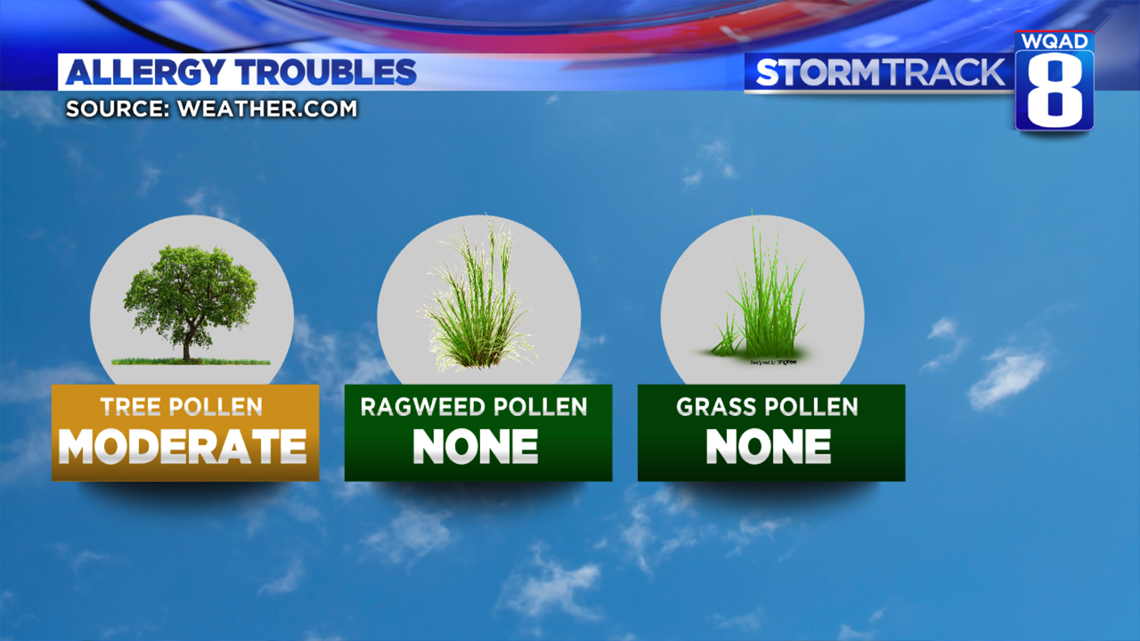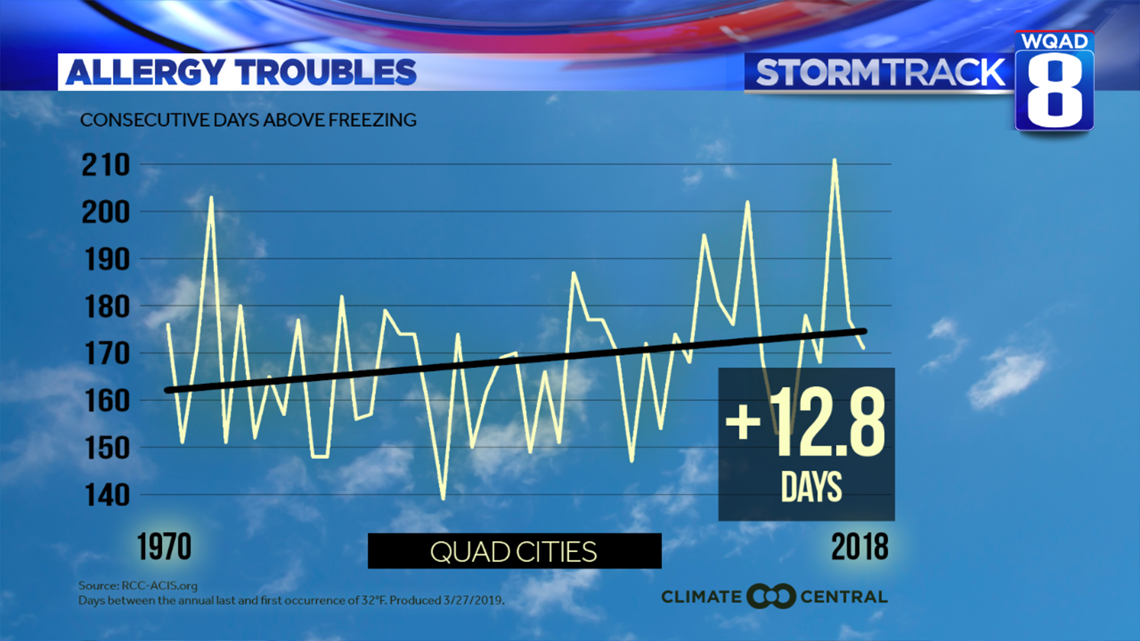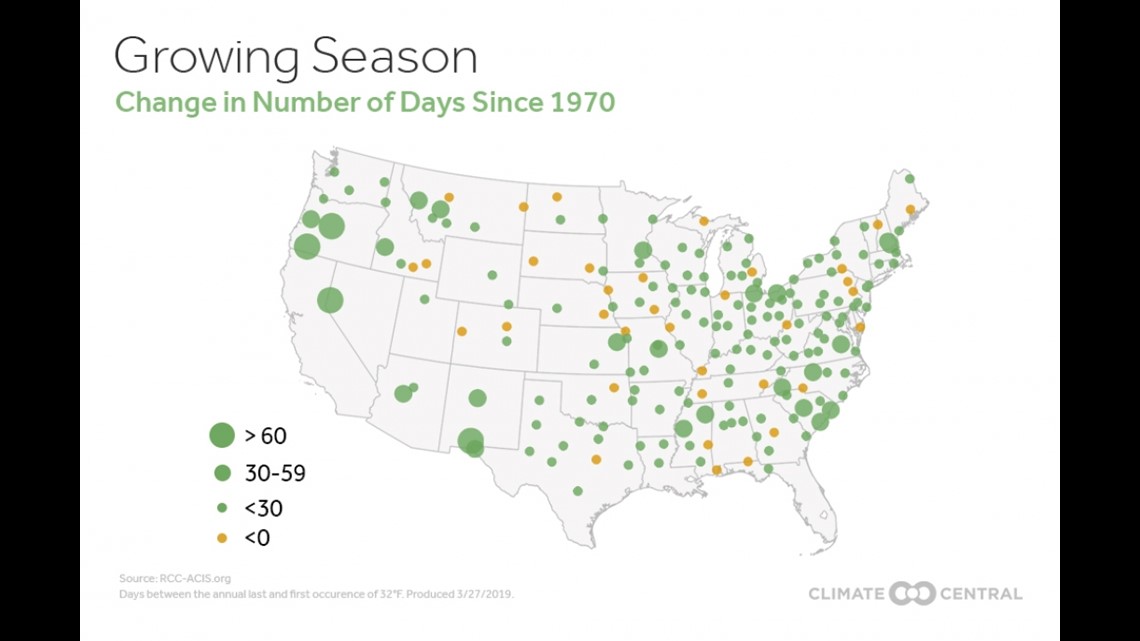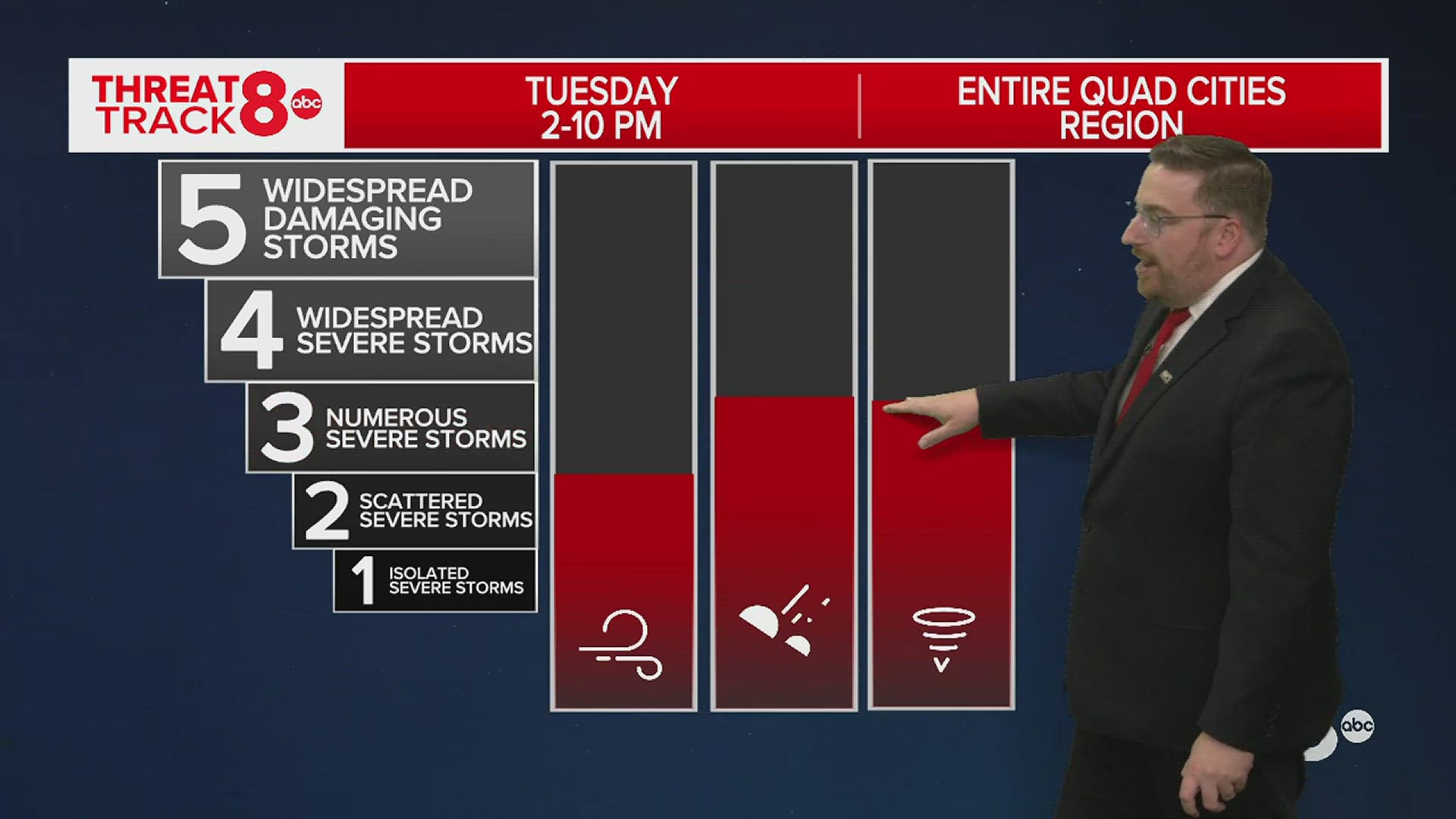If you have been sneezing a lot more frequently lately you are not alone. You are among the nearly 20 million Americans who suffer from pollen allergies.


The most predominant allergen we are dealing with right now heading into late April is tree pollen. It’s easy to see why as the trees begin flowering and leaves emerge. In the coming weeks, we’ll be adding ragweed and grass pollen to the list as those plants become more active with the warmer temperature pattern.


Looking long term though, the signs point to more active allergy seasons ahead of us as the growing season continues to expand. From the time period of 1970 to 2018, the Quad Cities saw a gain of nearly 13 days to the growing season or the number of days between the annual last and first assurance of 32° temperatures.
Scientists believe that climate change has resulted in the extended freeze-free season, giving plants more time to grow, flower, and produce pollen. Laboratory experiments even suggest that as the amount of carbon dioxide (CO2) in the atmosphere increases, the amount and potency of pollen will also increase. This is one of the few effects that we can actually see and feel that is the result of climate change, as more people than ever before are diagnosed with allergies and asthma in the United States. The proportion of Americans who suffer from asthma rose from 3.1 percent to 8.4 percent of the population between 1980 and 2010 alone. Rates are even higher among African-Americans, low-income households, and children.
While researchers do not fully understand the causes of the upward trend in allergies, one thing is clear. As our atmosphere warms, the freeze-free season generally begins earlier and lasts longer each year, extending the time during which plants can grow and produce pollen.


This change isn’t just linked to one specific area. Nearly every part of the country has seen some change in the length of the growing season year-over-year. The most pronounced changes have occurred in cities like Minneapolis, El Paso, and Philidelphia where the growing season has been extended by four weeks. In parts of Oregon and New Mexico, the length of the growing season increased by two months!
If warming conditions continue to climb and remain unchecked, by the end of this century, the growing season will lengthen by at least one additional month in most of the United States when compared to the late-twentieth century.
Meteorologist Andrew Stutzke
Download the News 8 Weather App — for iOS, click here and for Android, click here
Download the free News 8 App — for iOS, click here and for Android, click here



